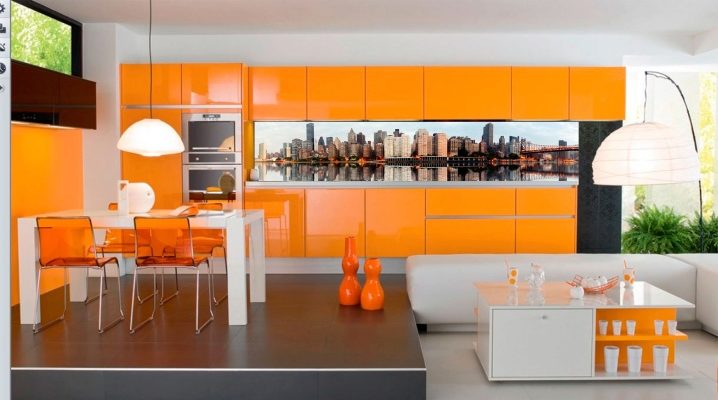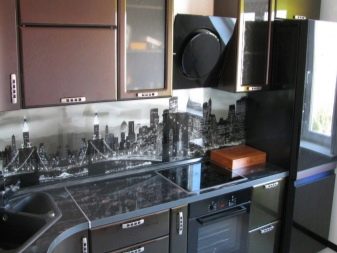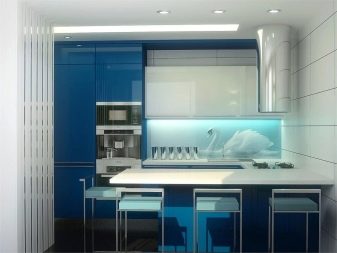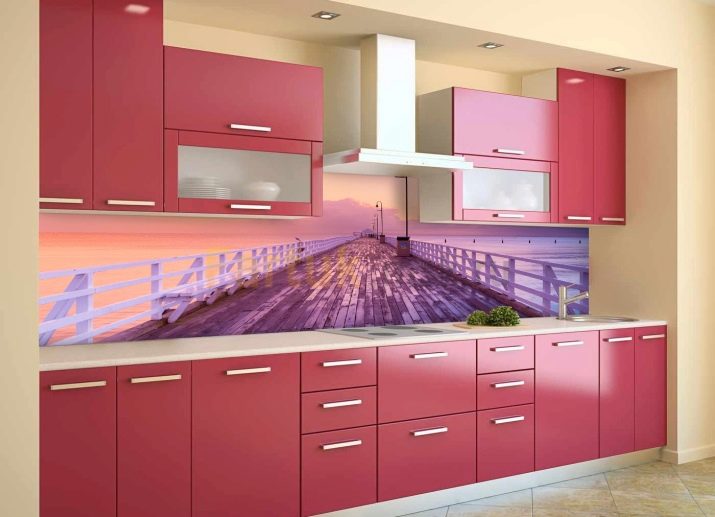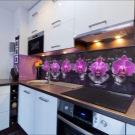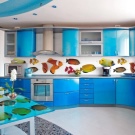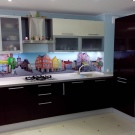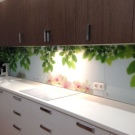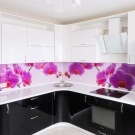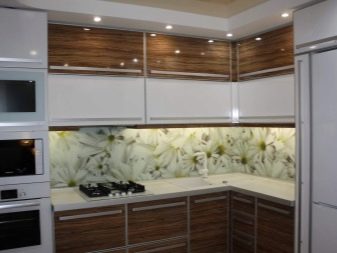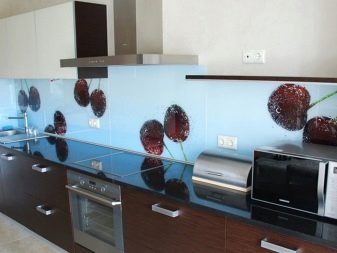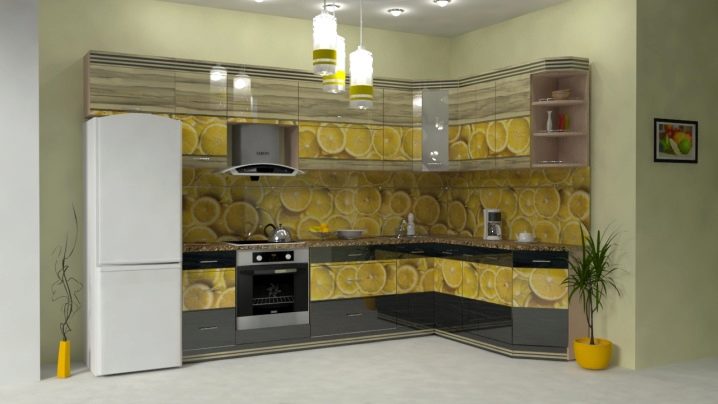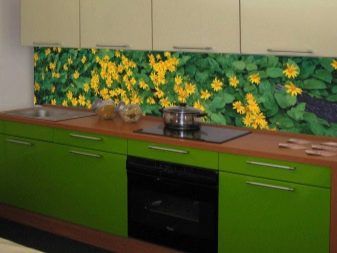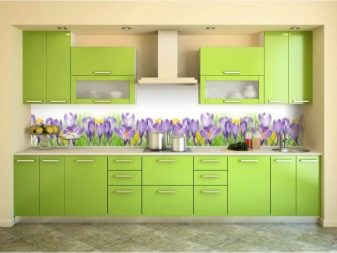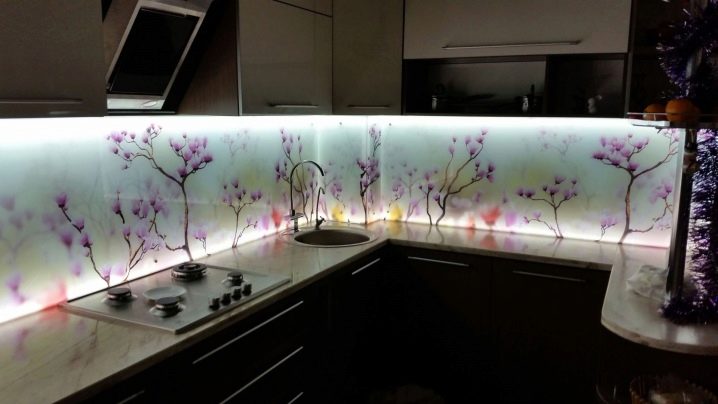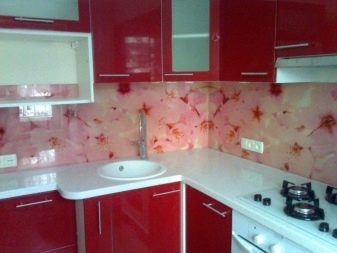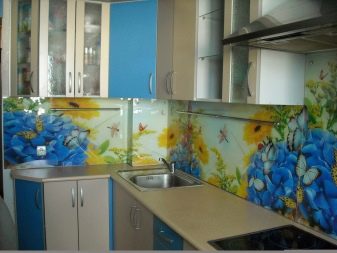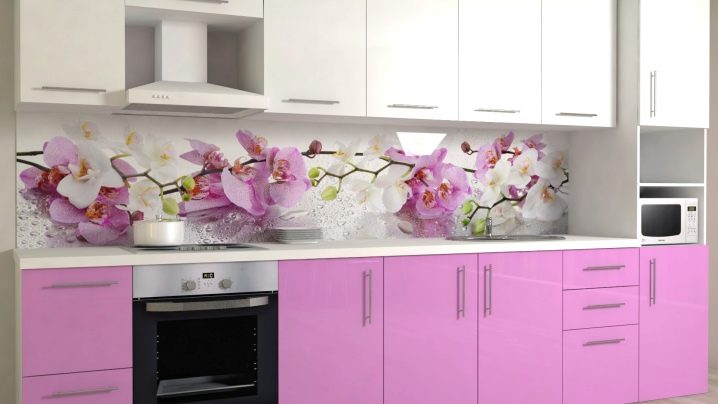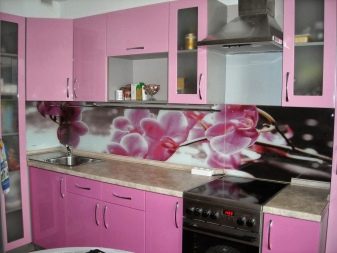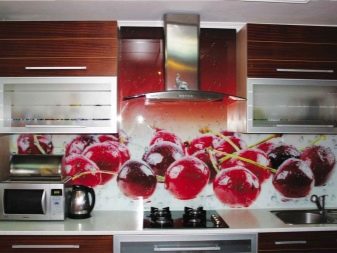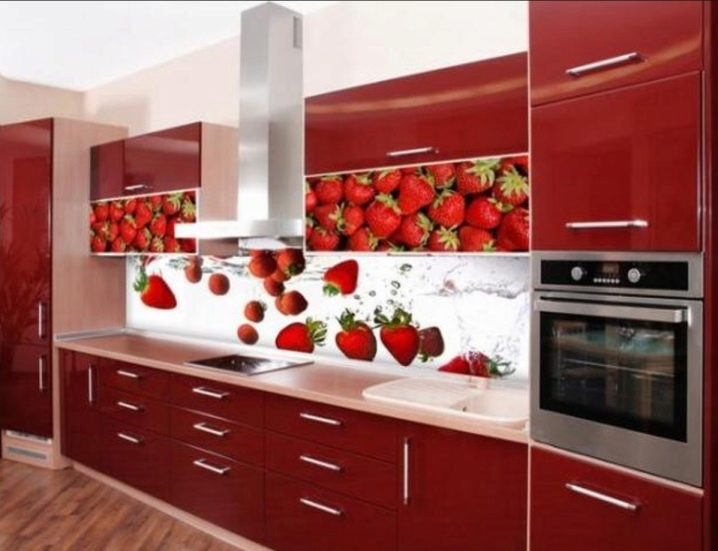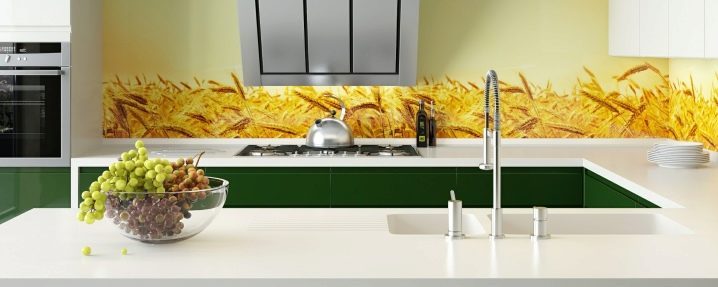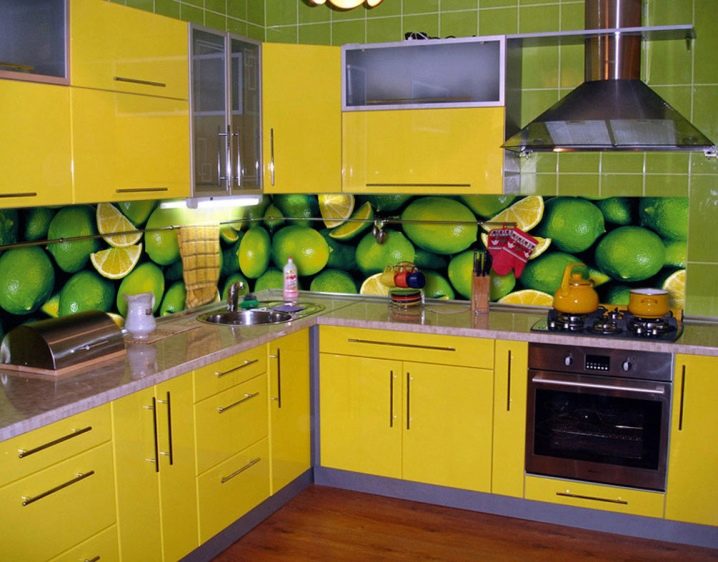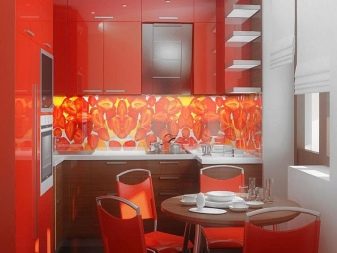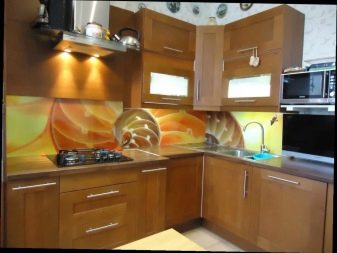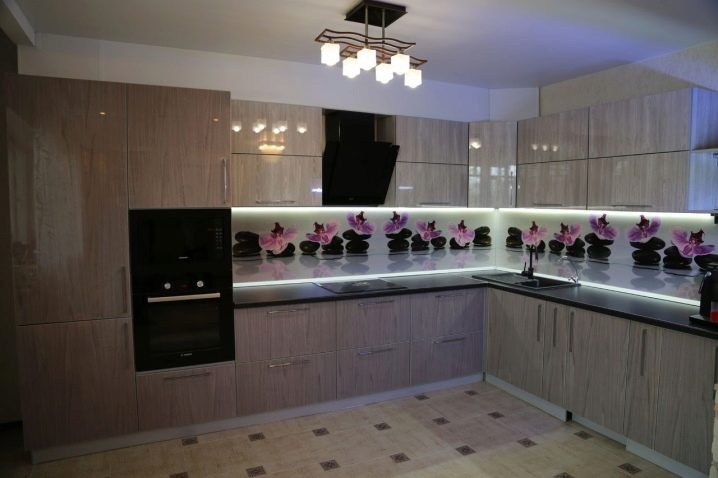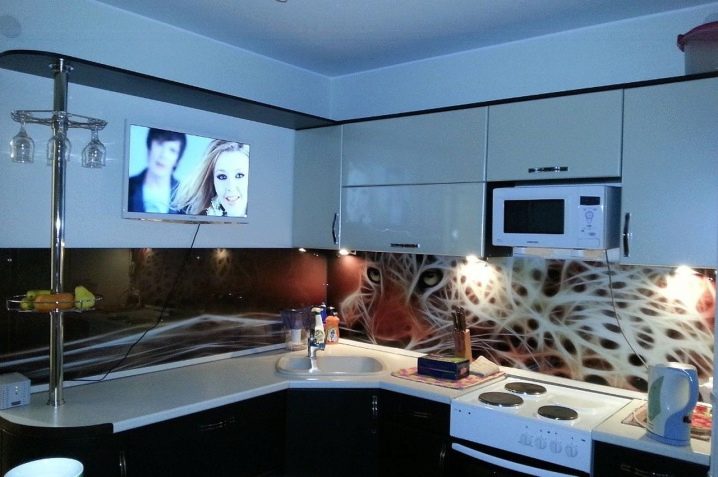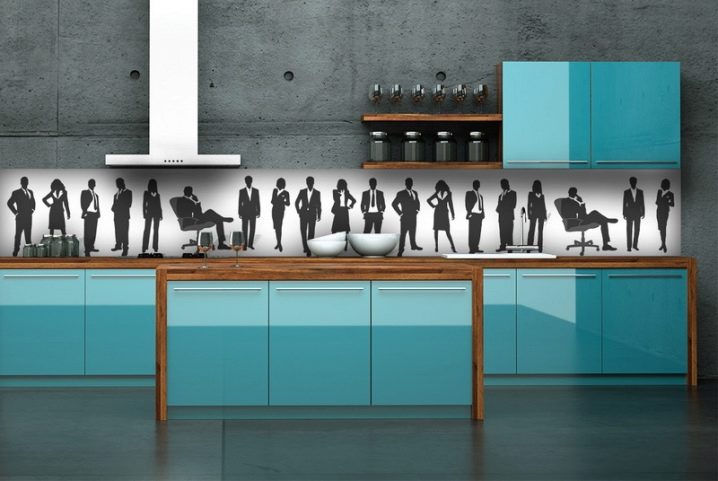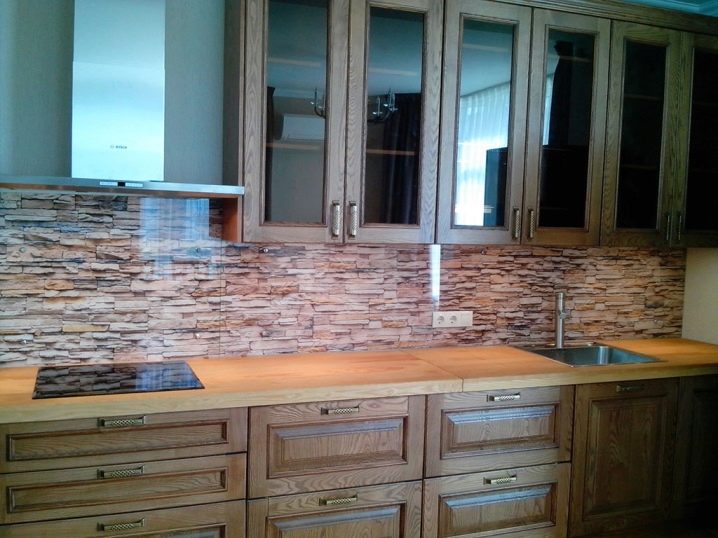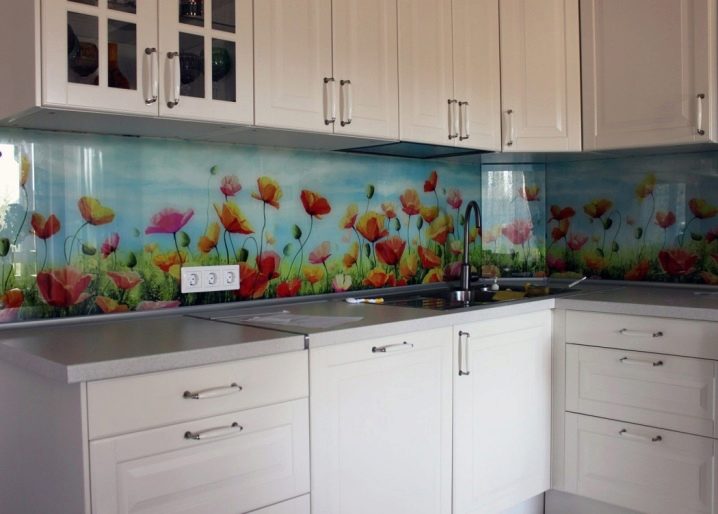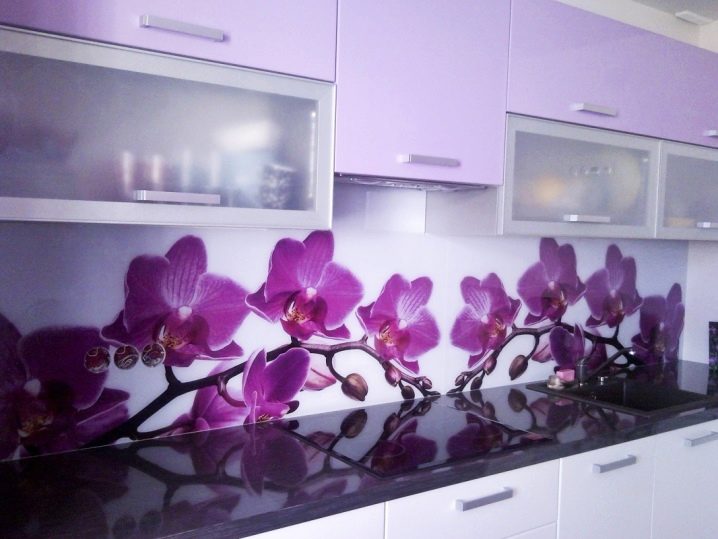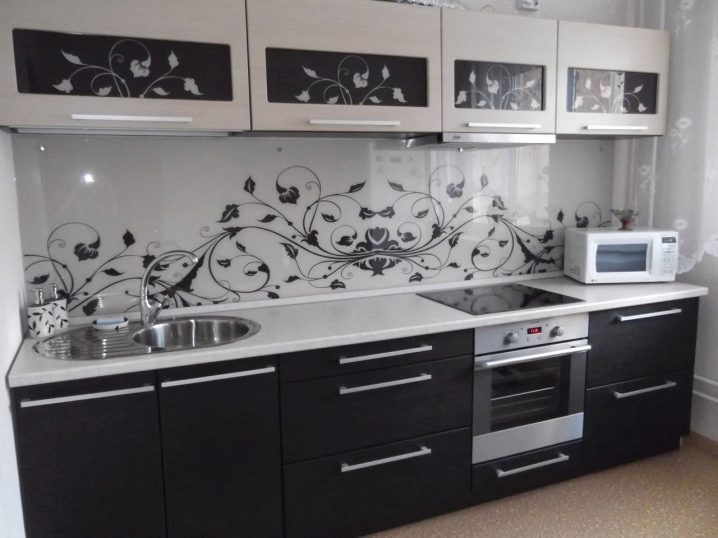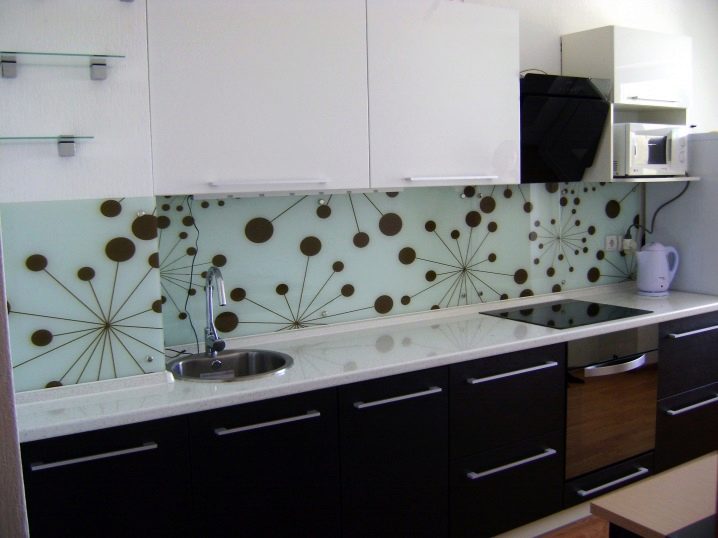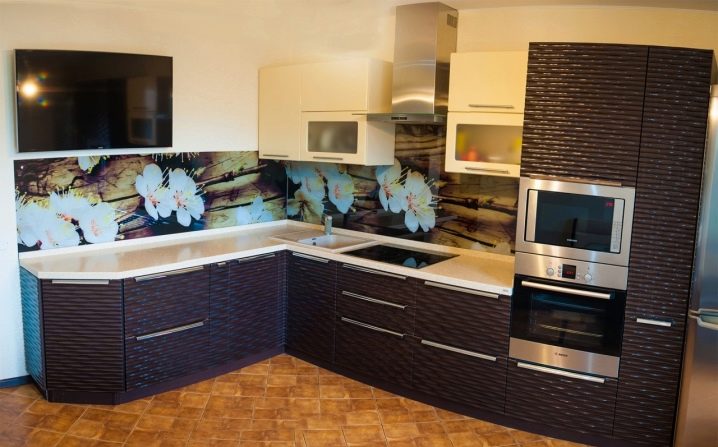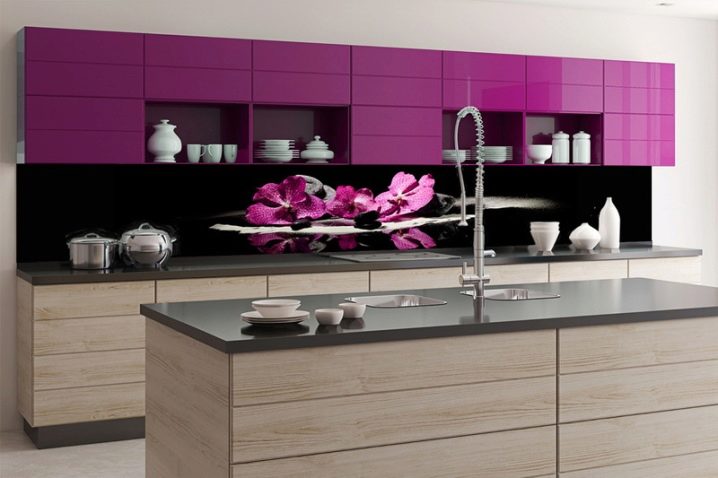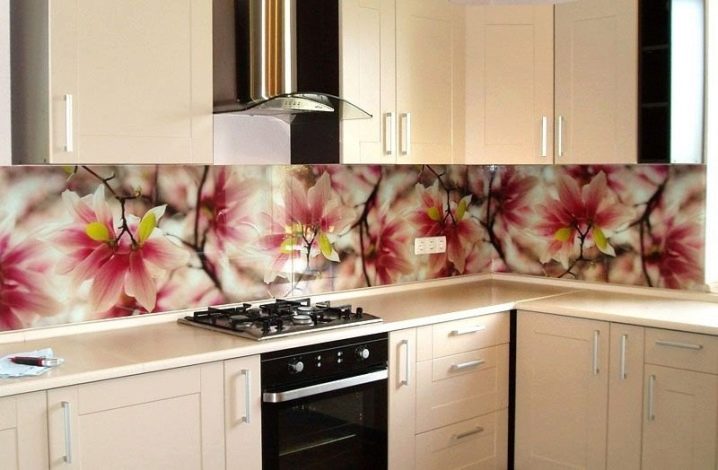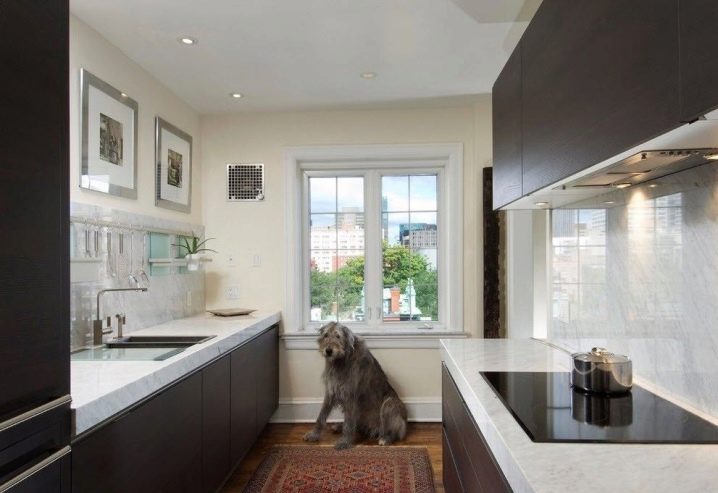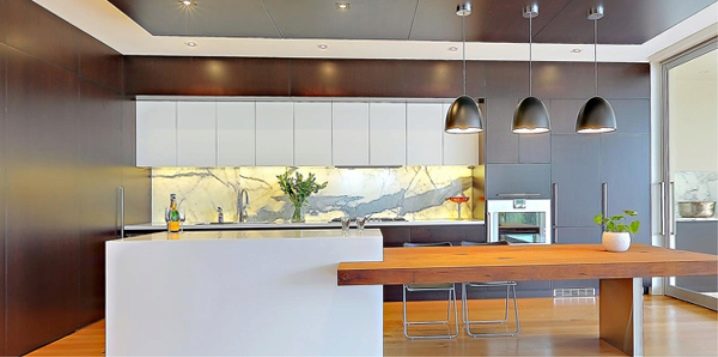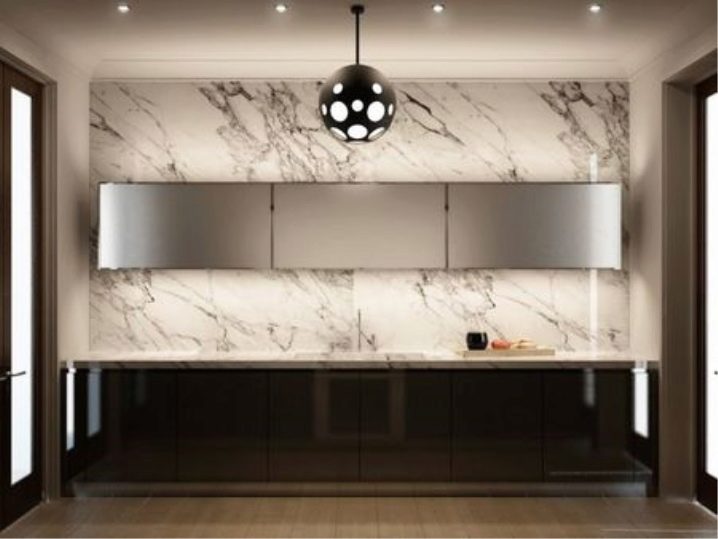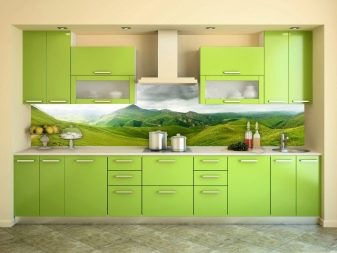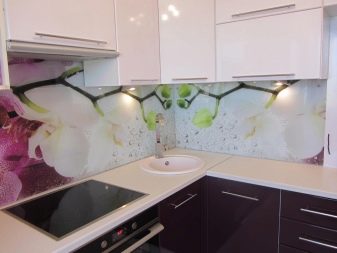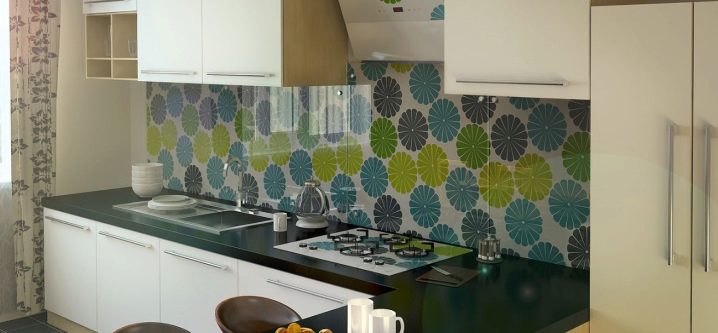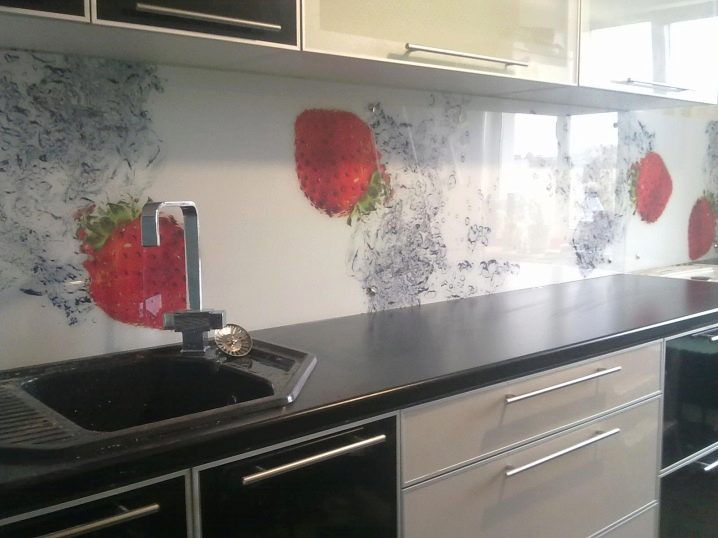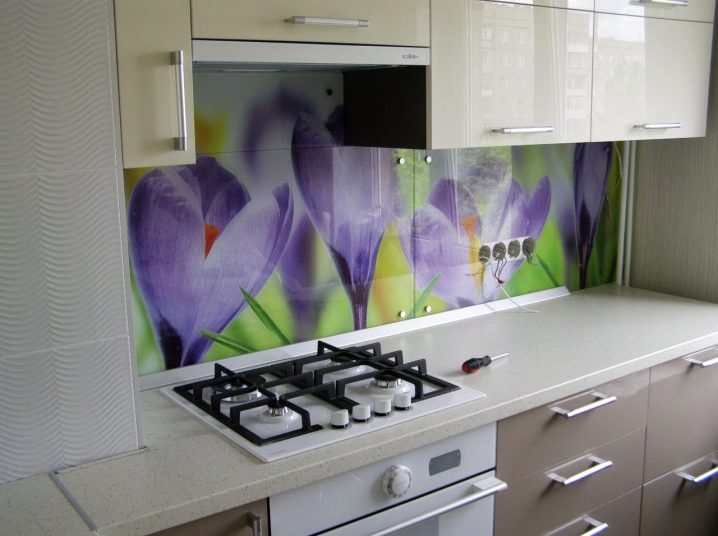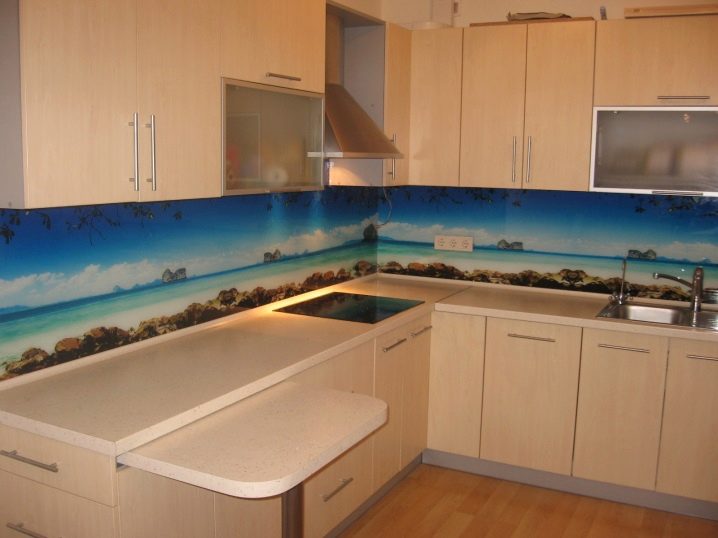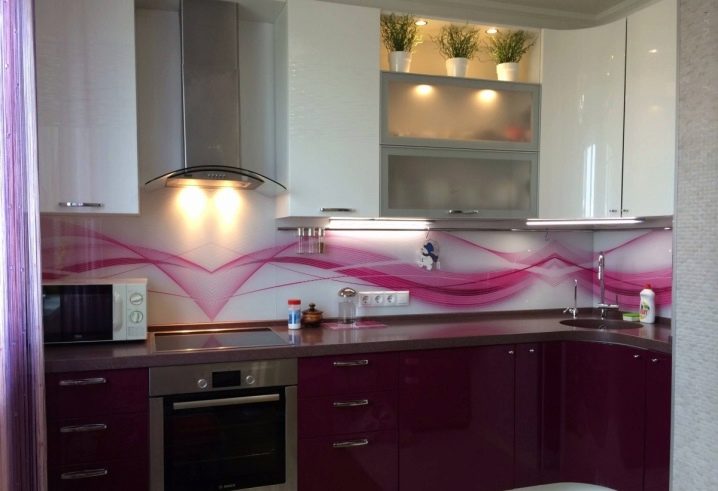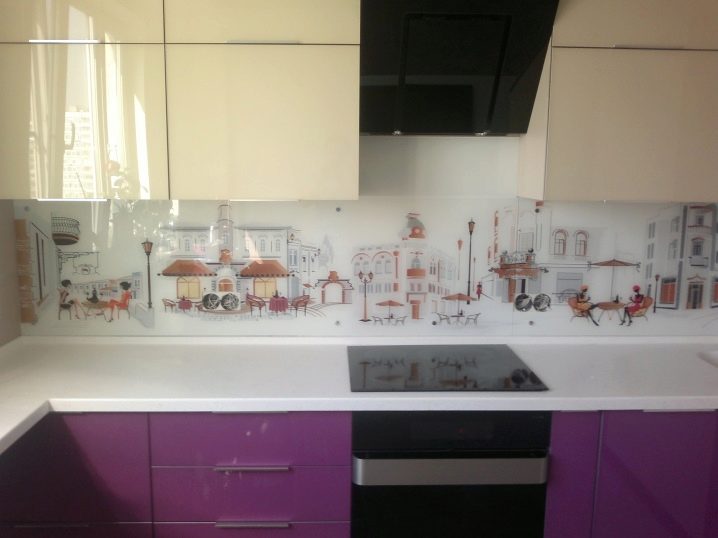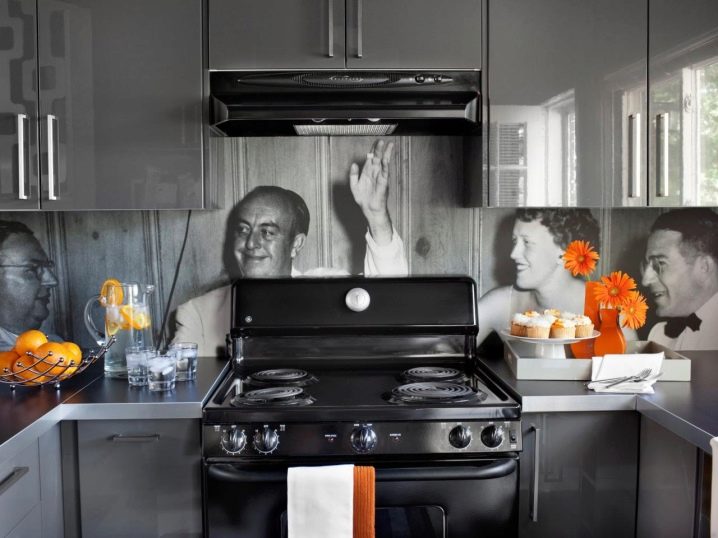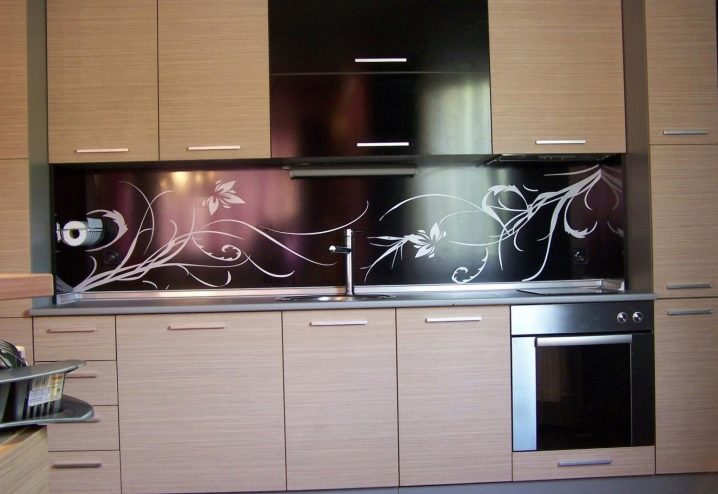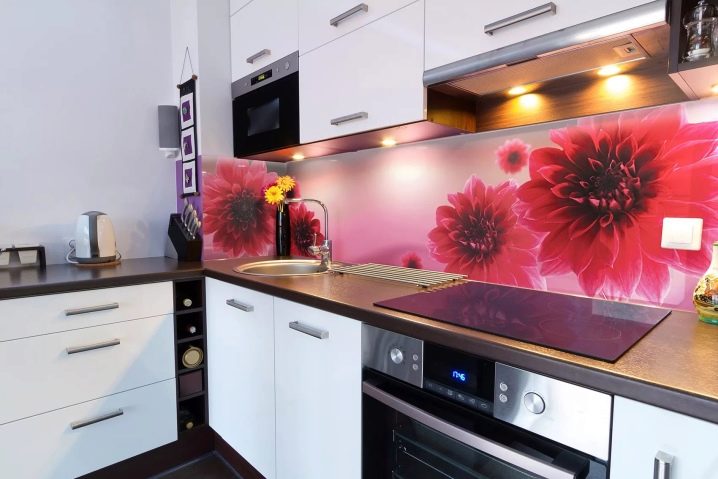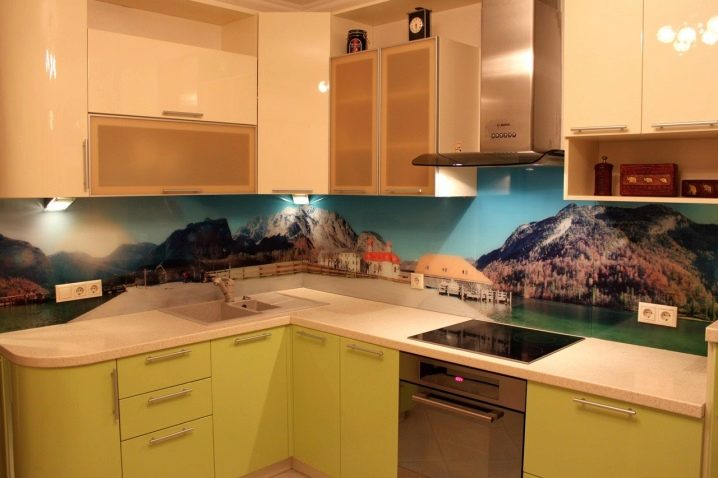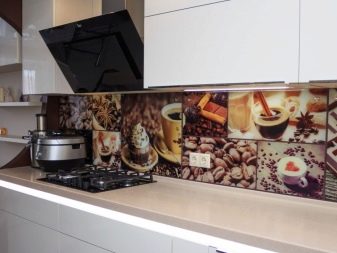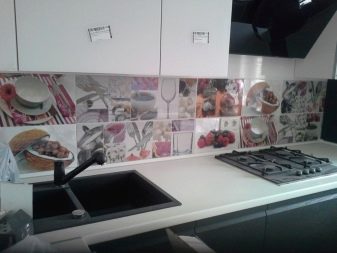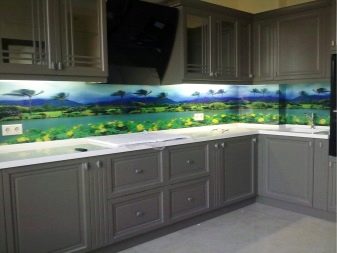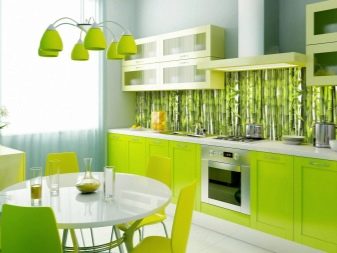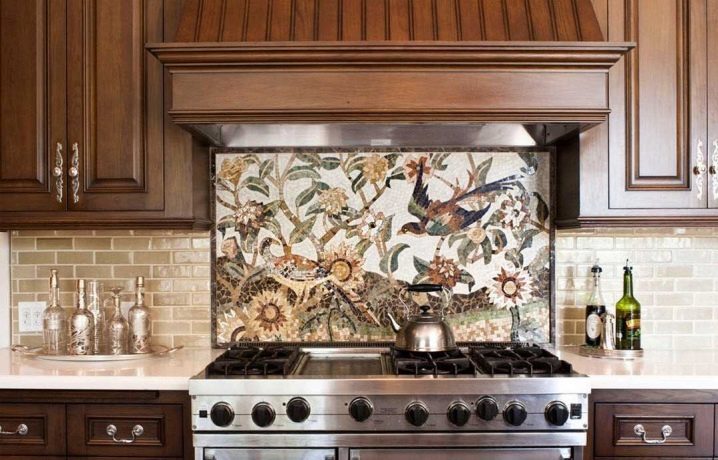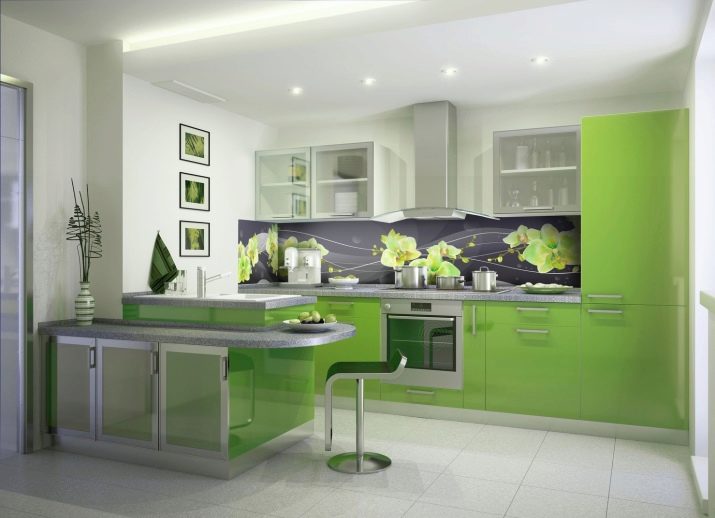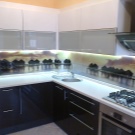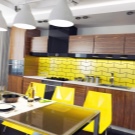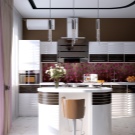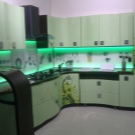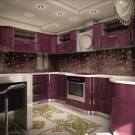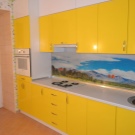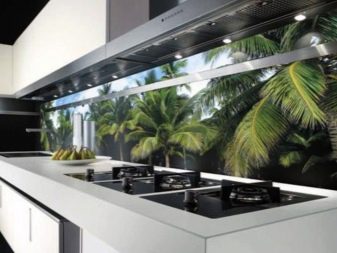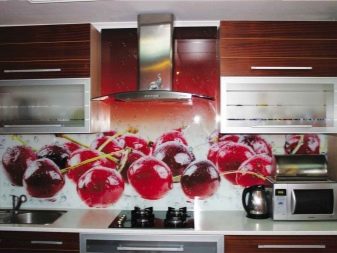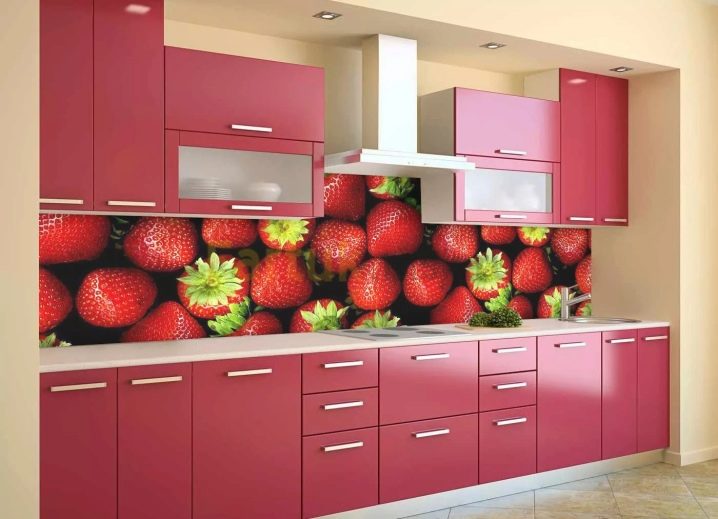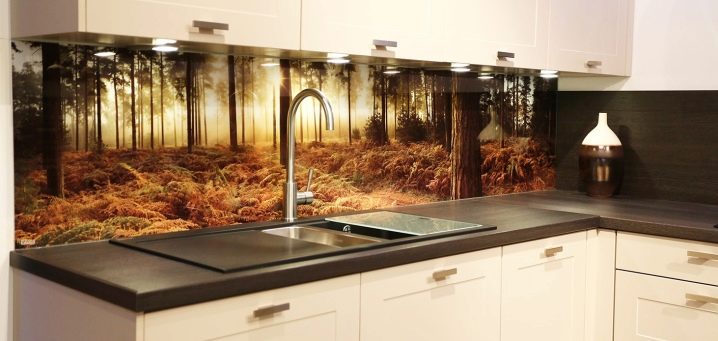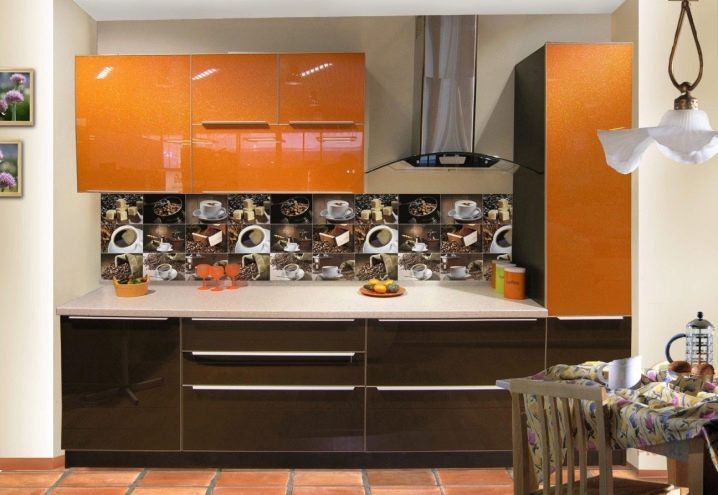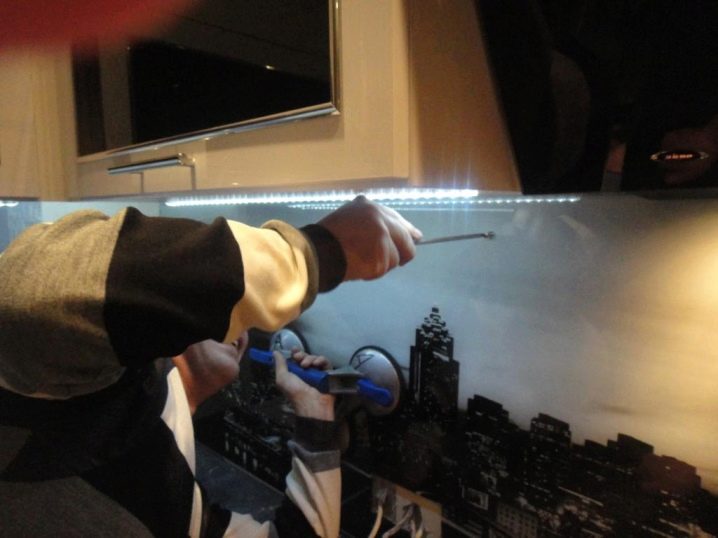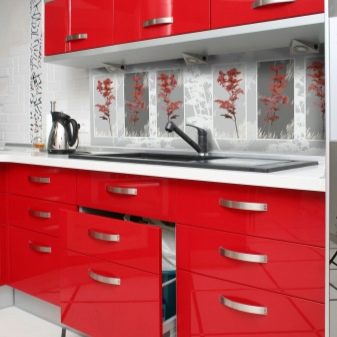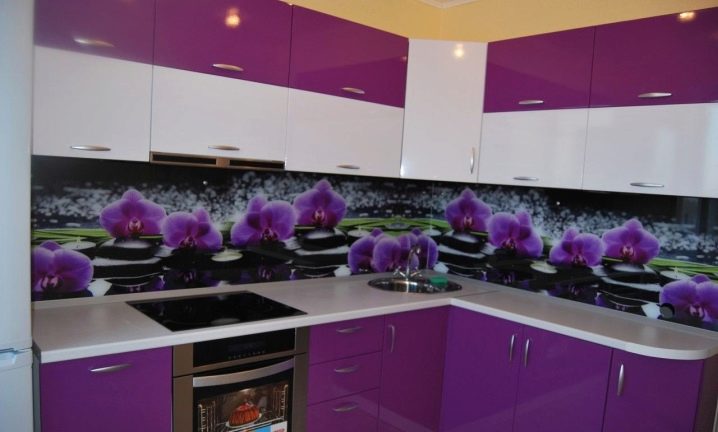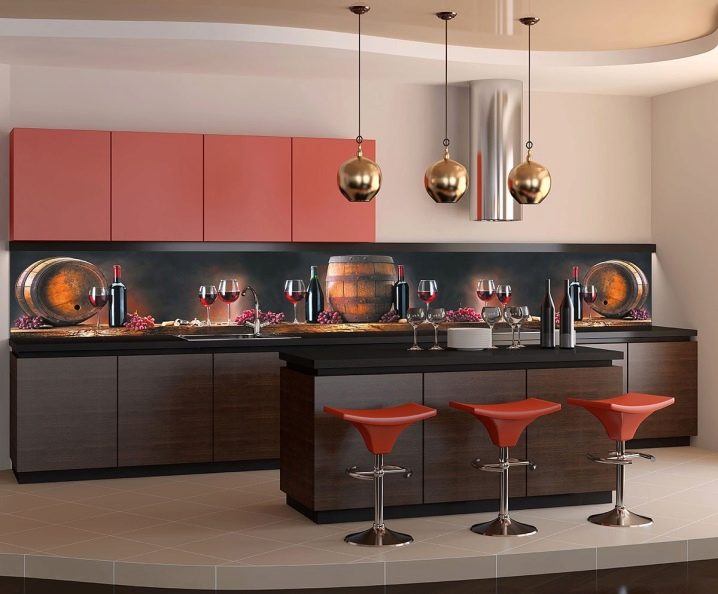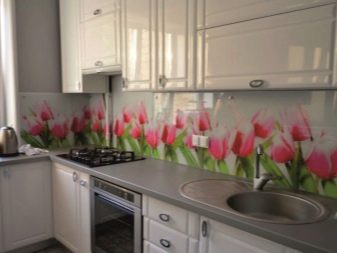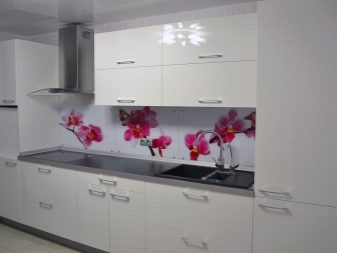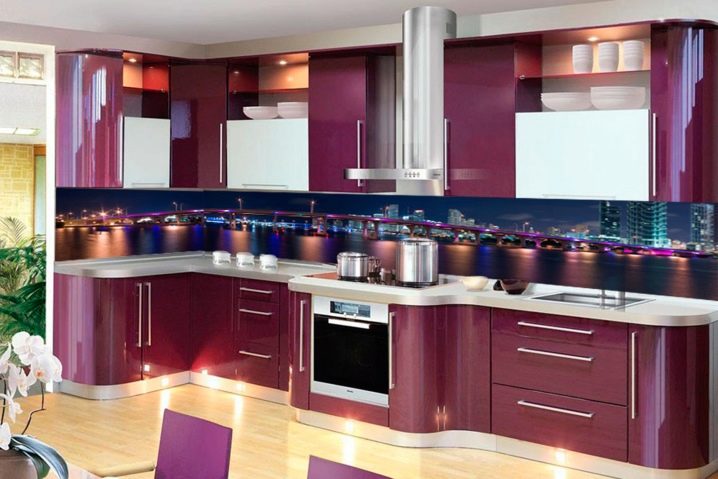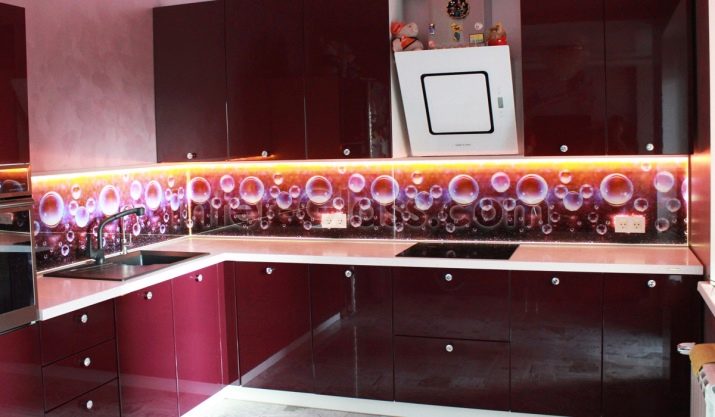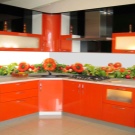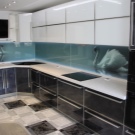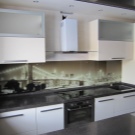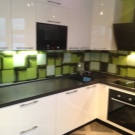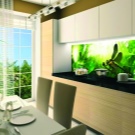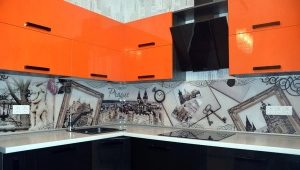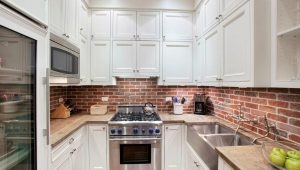Photo printing for an apron in the kitchen
Apron for the kitchen is a ready-made blocks of special materials that allow you to protect the kitchen walls from contamination. Such a device is not only a functional protection in the kitchen, but also a wonderful decorative element. Thanks to photo printing on the apron of the kitchen, you can arrange it with various images and choose the photos already available from manufacturers or create a sketch yourself.
Materials
The problem area above the kitchen desk should be well protected from splashes, grease, hot air from the stove, so the coating on the wall should be heat-resistant, wear-resistant, well cleaned and for a long time to please the eye. You need to know the main distinguishing features of each photofart material to make the right choice when purchasing.
The main materials from which made the photos:
- plastic;
- MDF;
- HDF;
- glass.
Plastic panels - the most common for the manufacture of the apron, they are inexpensive and quite practical to use. The following types of plastic are used:
- PVC (polyvinyl chloride);
- PMMA (acrylic, organic glass, plexiglass);
- polycarbonate.
Plastic panels meet the following requirements:
- thermo resistant;
- moisture resistant;
- wear resistant;
- resistant to aggressive (chemical) products;
- hygienic;
- small weight;
- easy to install;
- practical;
- impact resistant (acrylic and polycarbonate).
It is worth noting to consider the disadvantages in order to avoid disappointment when usingand:
- Deformation from excessively hot air from a gas stove or oven is possible.
- There may be scratches from cleaning with abrasive compounds and brushes.
To avoid negative consequences, you must adhere to certain rules for the care of plastic panels:
- To scratch was less visible, you need to choose a more colorful and small pattern.
- To avoid deformation, you need to combine plastic panels and, for example, tile or glass in the zone of greatest heat.
- It is better to use a gas stove with a hinged top cover.
- Do not use brushes, powder and alcohol cleaners, acetone and solvents.
- It is necessary to clean the apron in a timely manner from contamination by a dry lint cloth.
The widespread use of photo panels for the apron in the kitchen due to its favorable price and practicality, but the price may increase depending on the selected coverage. Polycarbonate panel is more durable, therefore more expensive.
MDF refers to the material of the average price category. The hygroscopicity of the material is quite reliable, but the protection of the plate depends on the methods of coating:
- film - PVC or acrylic film wrap (not reliable);
- lamination - coating with a special compound;
- acrylic - thick polymer sticker
Advantages of MDF panels:
- strength;
- impact resistance;
- resistance to abrasion;
- sound and heat insulation;
- the presence of subpanel distance on the frame (allows for electricity);
- ease of installation;
- not expensive
Photographic panels from MDF are chosen to comply with the general ensemble with furniture from the same building material.
In order for the plates to serve longer, you need to know some of the nuances:
- Acrylic coating and lamination - more reliable than film, which is worth considering when buying.
- It is necessary to properly and carefully seal the ends of the panels and attachment points to avoid swelling from excessive moisture and water.
HDF for an apron in the kitchen is a relatively new material on the construction market.It is similar to MDF, differs only in greater practicality. Manufacturing technology allows, without loss of performance (close to the properties of natural wood), to reduce the thickness and weight of the product and increase strength. The pattern is printed on extruded varnished wood plates, and the result is fixed on top of a colorless heat-resistant varnish. The plates of this material in quality and appearance are similar to natural wood.
Advantages of HDF:
- resistance to various chemical and mechanical stress;
- strength with weight reduction;
- hardness;
- durability;
- ecologically safe;
- ease of construction;
- do not clutter the space;
- installation is not complicated and convenient, cost-effective;
- due to the lacquer coating, the photo drawing remains bright and saturated for a long time.
Such a photo apron saves space, which is ideal for small areas, visually enlarges and expands the space. Another advantage is simplicity and ease of care, it is enough to clean the surface in a timely manner and wipe with a soft cloth.
Glass panels - skinali - are ideal for photofartuk in the kitchen.They are made of various glass: corrugated, tinted, frosted, transparent or colored. The thickness of the sheet depends on the coverage area (the larger the surface, the thicker the glass).
Photograph with glass can be combined in the product in various ways:
- Behind the glass. The most affordable and simple, therefore, suitable for self-installation. It is bought, any collage or photo wallpaper is invented and covered with a sheet of glass.
- Vinyl film coating. Refers to the budget option. The high expansion pattern is printed on the printer and glued onto a glass surface.
- Direct print on skinali. Expensive way: using a special printer and professional technology drawing is applied directly to the outer glass surface. This method saves the image as much as possible, making it voluminous and saturated.
In addition to the photo drawing to decorate the panel, use sandblasting images on the inner surface.
The advantages of glass walling over other types:
- reliability;
- strength;
- durability;
- not deformed;
- resistant to mechanical and chemical cleaning;
- easy to clean;
- different hygienic and safe to use.
Disadvantages:
- high price;
- installation complexity (installation is better to entrust to professionals);
- the impossibility of alteration and adjustment after manufacture;
- relative fragility.
To solve the issue of fragility, the technology of tempering glass with high temperature is successfully applied; it increases the strength indices several times.
Glass photo apron for the kitchen is quite expensive. The cost includes not only consumables, but also the complexity of manufacturing the panel, which includes measurements, cutouts for sockets and fasteners.
You can make a photo on the apron of natural stone and metal. Such options are quite expensive and will look beautiful if the top of the headset is from the same material.
Features of the apron made of natural stone:
- the greatest strength;
- low water absorption;
- strong resistance to temperature extremes.
Such aprons are more suitable for people with large incomes, because it is important not only to buy and install it, but also to properly care for it, and the means to care for an apron from such material are quite expensive.
Color solutions
After choosing the type and model of the apron for the kitchen, the question arises about the image that will be applied to the panel. This decision cannot be made quickly. It should be understood that the drawing is permanently fixed on the wall and must not only fit beautifully and concisely into the overall interior, be suitable for the design of the furniture, the floor, but also be harmonious.
How to choose an image that will look harmoniously and not intrusive in the kitchen above the desktop? Before buying you need to familiarize yourself with the advice of designers.
- For small and narrow kitchens, choose light colors and glossy reflective coatings. It is better to additionally use the backlight of the working area.
- It is better to choose neutral light and monochrome images, if the furniture, curtains and trim are bright.
- Carefully use bright and exciting pictures, they can get bored very quickly.
- It is always easier to supplement neutral tones with more vivid details (dishes, textiles, headsets) to change the overall mood in the interior.
- Choose a better pattern that matches the other decor.
- The drawing should appeal to all family members.
The most popular and spectacular images for the kitchen apron:
- floral ornaments: flowers, grass, juicy fruits and vegetables;
- macro photography: large enlarged photos;
- landscapes: cities, nature, village motives, mountains, sea;
- abstraction and unusual geometric images;
- romantic images;
- personal photos in color and monochrome;
- fantasy and fantastic images.
In any case, before ordering the selected image, it is recommended to check the selected image on the spot. If suddenly there is a socket or switch on an important element, for example, on the face, it will not be possible to change it.
Drawing can be picked up on special sites. For example, Shutterstock is a bank with photos and images of high expansion. Here you can find collections of photographs, illustrations, vector and stock images. Extensive catalogs provide an opportunity to select and order a finished printed blank for the apron.
Many companies are engaged in the production and installation of photo collages. For example, Lotos-Yug are manufacturers of HLP plastic aprons with representative offices throughout Russia.
The company provides extended catalogs with a choice of types of coatings in various colors (more than 400 colors), drawings, collages, high-resolution photo printing for any taste and size.In the manufacture of plastic used ARPA, LEMARK, LAMICOLOR, based on HDF and MDF. You can order a wall panel using your photos. The options for combining the types and colors suggested for photopanels are not limited.
You can also combine a photo with a mosaic apron, which can be made of ceramics, smalt, metal. stone and glass pieces. Only a professional can make a drawing on such an apron, so its cost will be much higher, but the beauty of the kitchen requires sacrifice. The disadvantage is that during installation, unhygienic joints can form, with careful care of the kitchen, such a minus will not be a big problem.
Ways of drawing an image
There are different ways of applying photos on an apron and each of them has its own characteristics.
Image on film
This is one of the easiest and cheapest options for creating a photo apron. The image is printed on a polymeric film and glued to any surface.
Direct print
The image is applied directly to a solid substrate, the material can be anything, it only needs to be thoroughly degreased before application.
There are several ways of this photo printing:
- UV method in which paints with a polymerization effect harden under the influence of ultraviolet radiation.
- Solvent printing, in which nano-dyes are used, which penetrate the material and are bonded to the substrate.
Hot cladding method
This method is used for photo printing on MDF. The image is applied to the substrate with a hot composition, the composition cools down and becomes a saturated image. This method improves the quality of the material from which the apron is made.
Installation
Photograph can be installed independently, and you can use the services of the wizard. In any case, it should be understood that for each material has its own installation features.
General rules for the installation of all types of panels:
- It is necessary to make a careful measurement, take into account that photo boards should go behind the furniture at 20 - 25 cm;
- Remember to connectors for outlets.
- For MDF and HDF, the edges should be treated with a protective coating.
Plastic is a material that is considered to be the easiest to install and does not require contacting masters. It is better to adhere to the following sequence:
- First of all, the wall is treated with a means of mold and fungus.
- If the walls to which the panels are to be fixed are smooth, the inner surface of the sheet is smeared with liquid nails and glued. If there are irregularities, a wooden frame is installed - crate, then a sheet of plastic panel is glued or fastened. For this, it is better to use a building staple, stapler and screws.
- Attachment points are hidden with plastic baseboard or bead.
MDF panels
- Prepare the surfaces to which the photo panels will be fixed (stripping), having treated them with special anti-mold fluids.
- Assemble the wooden frame for the base, retreating 10 to 15 cm from the edges of the furniture.
- Slats hold crate for rigidity.
- With the help of screws with decorative hats and special pads from the penetration of moisture to the color of the pattern, attached sheets of apron.
- Close the seams and fixings with baseboards and plugs.
HDF plates
- using liquid nails and glue (if the surface is perfectly flat);
- on the frame of wooden slats;
- on aluminum profiles;
- using a special headset (screws with rubber gaskets);
- installation of baseboards;
- closing fixing points with decorative plugs.
Glass panels
In order to install glass panels, you should turn to professionals, since this type of material requires strictly sequential actions, there should be no installation errors.
It is important to do:
- careful measurements;
- make cutouts for sockets, switches, attachment points and wires;
- to temper glass;
- put pictures or sandblasted drawing on the back of the panel or paste a collage onto the glass;
- cover images with white protective paint on the back side.
All items are held in the production premises, because any inaccuracy can lead to irreparable consequences, the panel will have to be redone. Installation is carried out only after the complete assembly of kitchen furniture.
To turn the most working area in the kitchen, which is exposed daily to heating, washing, cleaning and processing, into an attractive and harmonious decoration, is quite simple. Here you can fully express your imagination, express desires and individuality. Considering the positive characteristics of the materials from which the wall covering in the kitchen is made, the hostess will not have to devote a lot of time to cleaning the photo-apron.
